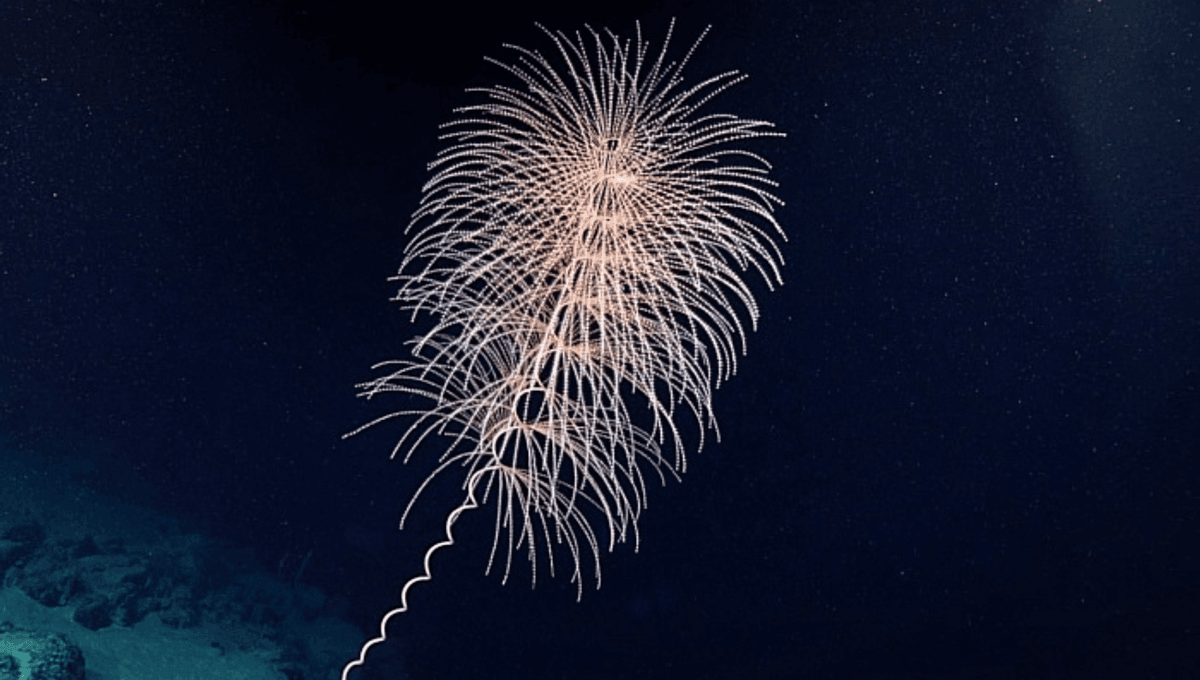
Evidence has been found for bioluminescence having existed among animals 540 million years ago, more than doubling the previous record. Besides altering how we picture the oceans of the world in the Ediacaran era and thereafter, the finding could shed light (sorry) on the reasons bioluminescence evolved and is so widely used today.
The capacity to produce light is widely used across many species of animals, fungi, and single-celled organisms. Remarkably more than 100 examples of the capacity evolving independently, rather than being inherited from a common ancestral species, have been identified. Some organisms that can’t do it themselves have recruited others into symbiotic relationships. The benefits are sometimes obvious, such as attracting mates or luring prey. However, it takes a lot of energy to make light, and biologists often wonder how the reward justifies that expenditure. The discovery of its deep roots among Anthozoa could change that.
“Nobody quite knows why [bioluminescence] first evolved in animals,” said Dr Andrea Quattrini of the Smithsonian Museum in a statement. Quattrini is the museum’s curator of corals and investigated why soft corals sometimes glow when disturbed, puzzling behavior for creatures whose vulnerability makes drawing attention to themselves hazardous.
With colleagues, Quattrini found bioluminescence predates the soft corals themselves and can be traced to before the branching off of gorgonians like sea fans and sea pens, fellow members of the octocoral class.
“We wanted to figure out the timing of the origin of bioluminescence, and octocorals are one of the oldest groups of animals on the planet known to bioluminesce,” said Dr Danielle DeLeo. “So, the question was when did they develop this ability?”
Not all octocorals are bioluminescent, but a great many are, particularly those that inhabit deeper waters. Using a family tree that reveals 185 octocorals’ relationships to each other, DeLeo, Quattrini, and co-authors looked for species that use bioluminescence today to investigate the chance their ancestors did too.
“If we know these species of octocorals living today are bioluminescent, we can use statistics to infer whether their ancestors were highly probable to be bioluminescent or not,” Quattrini said. “The more living species with the shared trait, the higher the probability that as you move back in time that those ancestors likely had that trait as well.”
The results were verified using several statistical approaches, all of which produced the same result – the ancestral octocoral, from which the entire class comes, was probably bioluminescent. The fact all octocorals use the same chemicals to make light indicates modern light-makers inherited their talent from this one event.
Genetic and fossil evidence places this at around 540 million years ago, 273 million years before ostracod crustaceans, previously thought to be the oldest example of bioluminescence in the animal kingdom.
Presumably, the trait carried some evolutionary benefit, and continues to do so today, although whether the advantages are the same in the very different modern world is unknown.
An intriguing hypothesis proposes that bioluminescence originally appeared as a way of disposing of excessive oxygen, with the light a side-effect that subsequently turned out to be useful. Although unproven, the authors consider this idea compatible with what they have learned and think bioluminescence may have evolved in a relatively shallow-water species and allowed diversification into the depths.
There are some 3,500 known octocoral species – and almost certainly many more undiscovered – so the sample of 185 used for this study is small. You’d have to do a lot of coral bumping to test all of them for luminescence, and might miss the light if it’s faint, but the team are working on a genetic test that could solve the question in the lab.
As inhabitants of coral reefs, shallow water soft corals, and most gorgonians, are among the more vulnerable species to climate change, and many face more local threats like pollution and overfishing. Deeper waters are probably safer, but threatened by bottom-trawling. The authors hope what they have learned will in some way contribute to their survival, or perhaps just make people more keen to save these sources of beauty.
The study is published in Proceedings of the Royal Society B: Biological Sciences.
Source Link: Bioluminescent Animals Have Been Glowing For At Least 540 Million Years